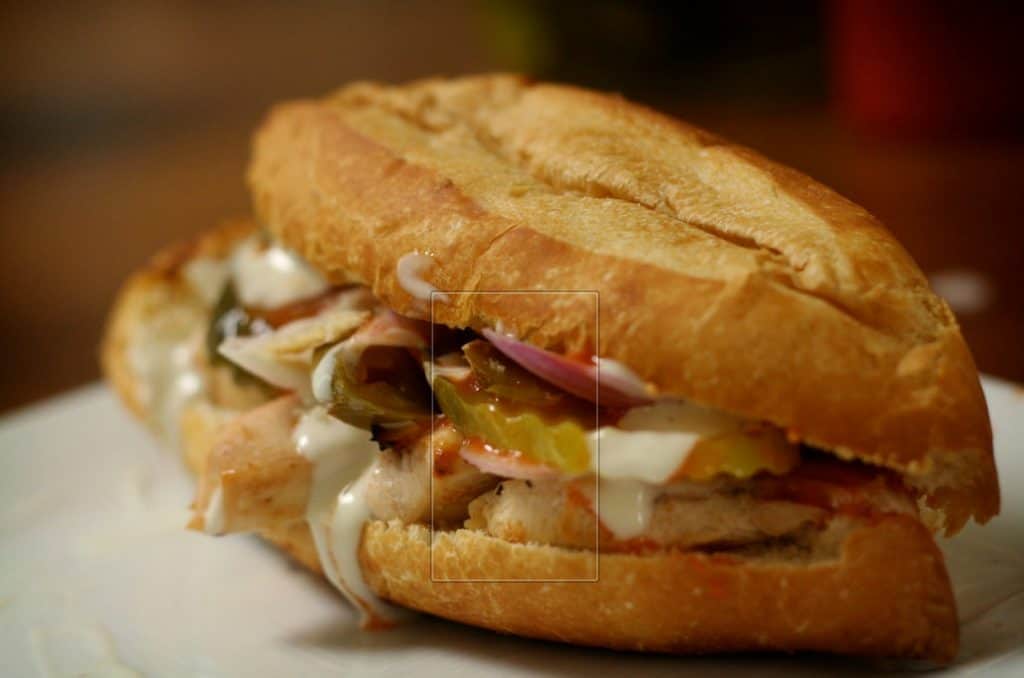Okay, let’s get down to business:
The tests were conducted by a DNA researcher at Trent University’s Wildlife Forensic DNA Laboratory, for a CBC Marketplace episode dedicated to testing fast-food chicken dishes, and have not been independently confirmed.
On the episode, which aired Friday, the show found that dishes from McDonald’s, Wendy’s, A&W and Tim Horton’s restaurants in Canada came in at 80 percent and 90 percent chicken DNA. (The meat was tested without any sauce or condiment, but seasoning and marinating would keep any chicken down from a pure 100 percent result, the CBC notes.)
But Subway’s dishes were an outlier. “The oven roasted chicken scored 53.6 per cent chicken DNA, and the chicken strips were found to have just 42.8 per cent chicken DNA,” the CBC reports. “The majority of the remaining DNA? Soy.”
Last week, Subway told the CBC that Subway Canada “cannot confirm the veracity of the results of the lab testing you had conducted.” Chicken strips and roasted chicken at Subway contain “contain 1% or less of soy protein … to help stabilize the texture and moisture,” the company told the CBC, and it promised to “look into this” with Subway’s supplier. [source]
See, when we talk about fast food, we have to talk about the fact that these companies are always profit-first. And what better way to make the chicken cheaper, than to plump it up with something infinitely less expensive than lean chicken?
The problem with that, however, is the fact that soy doesn’t have the same percentage of protein that regular chicken does, and it definitely doesn’t have the same amount of fat….which means it’s far less filling than you might otherwise expect. And, frankly, the 4oz serving of chicken that’s usually portioned out for sandwiches like that isn’t quite 4 full ounces of chicken…so you’re likely getting much less bang for your buck.
What’s more, Subway is saying they’re likely not responsible for this—according to them, the people who provide them with the chicken they use and distribute to their stores are the culprits, here. What does that mean? It means that Subway isn’t out here managing the production and manufacture of their chicken portions—they outsource that part to another company, the likes of which is probably overseas, who is paid to provide them X amount of product for Y amount of dollars. This kind of set up always incentivizes the supplier to cut as many corners as they can in order to turn a higher profit. If that corner cutting involves finding clever ways to stretch a supply of chicken by adding a bunch of soy to it, then why not?
It’s worth pointing out that this also happens with virtually all processed food. There is always an infusion of soy where solid, lean protein should be. There is always some kind of hydrogenated soybean oil (or palm oil which, while not entirely unhealthy, is awful or the environment) where naturally occurring dietary fat should be. There is always a thickener or filler like guar gum or locust bean gum or carrageenan where regular fat or cream would otherwise do the work. The consequences for those fillers, however, is always the loss of a far more filling, nutritious, and satisfying quality—the subtraction of protein and fiber and fat and, in many instances, the addition of high levels of carbs. A certain fast food chain’s burger buns are supposed to be brioche—a kind of high butter, incredibly filling bun—instead, they use chemical compounds to replace the flavor and consistency that butter would provide, making everything all carbs.
When people ask me whether or not fast food can be a part of a weight loss journey, my answer is almost always no, and this kind of stuff is why. Subway sells chicken that isn’t even 90% chicken, then implies that this isn’t their fault. The fault, then, lies in a nebulous organization that supplies Subway with its chicken—but Subway, as a brand, should still be okay as long as it procures a new supplier, right? The problem still persists. They don’t have control over their supply chain, and it continues to incentivize this kind of deception. As consumers, we can’t trust this. As people with weight loss goals, this is counterproductive.
Are there companies that use real products that aren’t manipulated for profit’s sake? Absolutely and, if your lifestyle makes it impossible to avoid fast food, then I encourage you to seek them out. But if you’re asking me whether or not these national fast food chains will ever be among them? I’m sorry to say I highly doubt it. It’s all the more reason to avoid them at all costs—not just on your weight loss journey, but after you’ve reached your goal, too.
